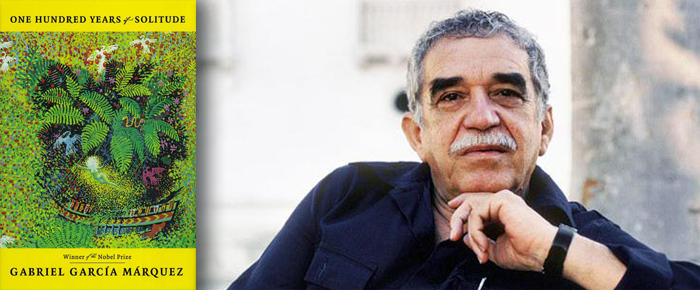
By Heidi Simmons
Latin literary giant Gabriel García Márquez has passed from this world. It would be apropos that his final resting place, where ever it is in this world or the next, be a place of beauty, magic and solitude.
Márquez was 87. His most famous work, One Hundred Years of Solitude, (Harper Perennial Modern Classics, 448 pages), published in 1967 has sold over 20 million copies and been translated into more than 30 languages.
A work of fiction, One Hundred Years of Solitude is a generational tale of a Latin American family and the changing conditions of their lives and village over 100 years. Macondo begins as a small piece of paradise secluded from the outside world with only the occasional gypsy passing through with goods and trinkets to sell and trade.
Macondo’s patriarch is Jose Arcadio Buendía. He has a thirst for knowledge and curiosity that eventually leads the community away from its magical, mythical past and drives it into the future. He ultimately goes mad believing he has discovered a way to create perpetual motion. He realizes he can only exist outside of time.
The Buendía family continues to evolve with the death and birth of succeeding generations. As the outside world is invited in, Macondo’s remote jungle setting is destined to lose its innocence. There is civil war, intense violence and family conflict, but they remain together. Macondo becomes “modernized.” A US banana company takes residence and further changes the nature of the village and the people. Finally, Macondo is devastated and the village returns to its isolation.
The last of the Buendía family line finds an ancient prophesy that predicted that Macondo and its inhabitants were living out a preordained existence.
One Hundred Years of Solitude is not an easy book to read. It is equal parts history, mythos and magic. It is about our human nature. It is about want and desire. It is beautiful and sad, funny and horrible. But there are moments of transcendence. And this is what makes the book compelling and such a favorite.
Like a magical child, Márquez saw the world filled with incredible life and characters. The edges of reality are sometimes dark and scary. At other times there are things fantastical and beautiful. Reading Márquez, it is best to let go and experience it — believe. Márquez’s writing is considered magical realism, but his magic seemed tangible and not far out or beyond comprehension, rooted perhaps in something very real, however dream-like.
Born in Columbia, as a young man Márquez wrote short stories and worked as a journalist. He became politicized in Columbia after a 1948 assassination in Bogota. He was a good friend with Fidel Castro – who jailed dissidents that included political writers, many who held similar views as Márquez.
Because of his outspoken opinions of US imperialism in Latin American countries, he was labeled a subversive and was denied US visas by immigration. When Bill Clinton became President, he lifted the travel ban and has reportedly said One Hundred Years of Solitude was his favorite book.
In 1982, Márquez received the Nobel Prize in literature for the way “the fantastic and the realistic are combined in a richly composed world of imagination, reflecting a continent’s life and conflict.”
Another popular book by Márquez is Love in the Time of Cholera (Vintage, 368 pages), written in 1985. The book was made into a movie staring Javier Bardem in 2007. Márquez wrote six novels, four novellas, seven non-fiction works and there are five collections of his short stories. He allowed his writing style to vary depending on the subject. Márquez could be very serious or very humorous.
Márquez was a significant literary contributor to our global community. Whether you like his politics or not, his stories introduced the world to his country and culture. He gave us an important picture of Latin life — its beauty, struggle and magic — a very special gift. Rest in peace, Gabo.















































